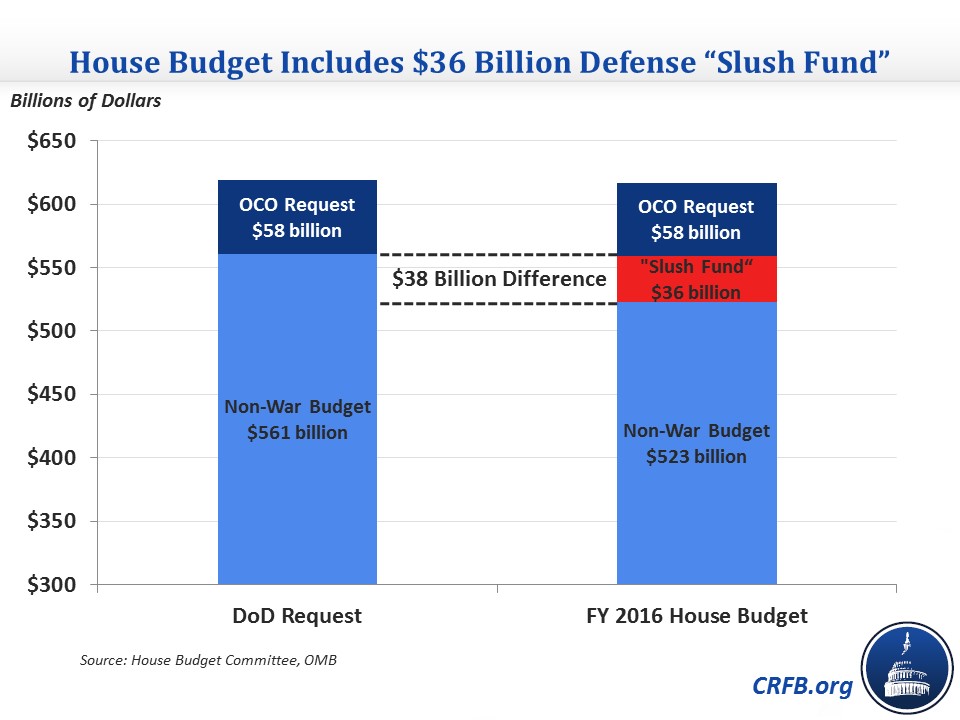House Budget Sets Dangerous Precedent for War Spending
One of the most important functions of budget resolutions is to set the spending limits for the coming fiscal year. At first glance, the House budget would seem to take a straightforward approach by abiding by the sequester-level defense and non-defense caps for FY 2016. But as David Rogers of Politico points out, the budget in effect breaks with the caps by increasing war spending by $36 billion above the Pentagon's request. Although the budget would follow the President's budget path for war spending after that, the 2016 figure represents a dangerous precedent that could significantly undermine the spending caps.
We have long warned about the practice of lawmakers using the uncapped war spending category (Overseas Contingency Operations, or OCO) as a slush fund to slip in non-war defense spending to get around the spending caps. We have shown how they have done this in the past two omnibus bills by overfunding categories in the OCO category relative to the Pentagon's request. By stretching the definition of war spending or sometimes outright ignoring it, lawmakers make extra room in the non-war defense budget for other spending.
However, the House budget's approach goes further in both scope and purpose than previous attempts. It provides $94 billion for OCO, more than was provided in FY 2013 when full combat operations were ongoing in Afghanistan and $36 billion more than the Pentagon's request for 2016. The $36 billion increase is much greater than the amounts actual spending has exceeded requests in the past, and the increase seems more explicitly designed to provide nearly the entire amount of sequester relief the budget seeks in other years rather than reflect actual funding needs. In other words, rather than having appropriators marginally game the OCO category late in the budget process, the budget would give lawmakers license up front to shift large portions of non-war spending into OCO.

The budget ends up with similar defense spending in 2016 as the President's budget but gets there very differently. The President's budget explicitly raised the caps by $38 billion and provided enough offsets to pay for it (and the rest of the sequester relief). By contrast, this move would effectively provide sequester relief without raising the caps and without offsetting the additional spending as the President and the Murray-Ryan deal did.
Further, by basically disregarding the distinction between the normal defense budget and war spending, the budget would set the stage for OCO to become a permanent slush fund for defense. This would not only be at odds with the budget's 2017-2025 numbers, when OCO is drawn down to $27 billion per year and eliminated after 2021, it would also make the defense spending caps largely meaningless because OCO could serve as a sequester relief vehicle whenever policymakers wanted.
This move also represents a significant step back from last year's House budget. Prompted by a proposed amendment from Budget Committee Ranking Member Chris Van Hollen (D-MD), the budget included language intending to restrict OCO spending to directly-related War on Terror spending. Instead of reprising this language, this budget instead proposes to blow the loophole wide open.
The temptation to make OCO a slush fund shows why lawmakers should enact caps on OCO spending and codify strict criteria on what can qualify. If the normal budget is not enough, then they can enact another Murray-Ryan-like deal to lift the caps. Using the OCO end-around is not acceptable.


